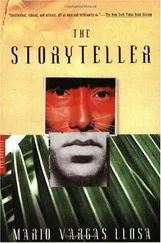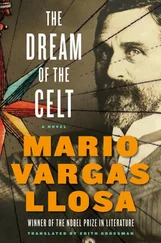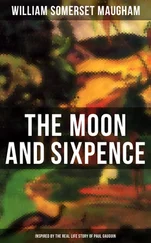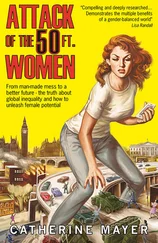Mario Llosa - The Real Life of Alejandro Mayta
Здесь есть возможность читать онлайн «Mario Llosa - The Real Life of Alejandro Mayta» весь текст электронной книги совершенно бесплатно (целиком полную версию без сокращений). В некоторых случаях можно слушать аудио, скачать через торрент в формате fb2 и присутствует краткое содержание. Год выпуска: 1998, Издательство: Farrar, Straus and Giroux, Жанр: Современная проза, на английском языке. Описание произведения, (предисловие) а так же отзывы посетителей доступны на портале библиотеки ЛибКат.
- Название:The Real Life of Alejandro Mayta
- Автор:
- Издательство:Farrar, Straus and Giroux
- Жанр:
- Год:1998
- ISBN:нет данных
- Рейтинг книги:4 / 5. Голосов: 1
-
Избранное:Добавить в избранное
- Отзывы:
-
Ваша оценка:
- 80
- 1
- 2
- 3
- 4
- 5
The Real Life of Alejandro Mayta: краткое содержание, описание и аннотация
Предлагаем к чтению аннотацию, описание, краткое содержание или предисловие (зависит от того, что написал сам автор книги «The Real Life of Alejandro Mayta»). Если вы не нашли необходимую информацию о книге — напишите в комментариях, мы постараемся отыскать её.
The Real Life of Alejandro Mayta — читать онлайн бесплатно полную книгу (весь текст) целиком
Ниже представлен текст книги, разбитый по страницам. Система сохранения места последней прочитанной страницы, позволяет с удобством читать онлайн бесплатно книгу «The Real Life of Alejandro Mayta», без необходимости каждый раз заново искать на чём Вы остановились. Поставьте закладку, и сможете в любой момент перейти на страницу, на которой закончили чтение.
Интервал:
Закладка:
At the entrance to the Museum of the Inquisition, I see that at least another dozen old people, men, women, and children have joined the family in rags I saw before. They constitute a sort of grotesque royal court of tatters, grime, and scabs. As soon as they see me, they stretch out their black-nailed hands and beg. Violence behind me and hunger in front of me. Here, on these stairs, my country summarized. Here, touching each other, the two sides of Peruvian history. And I understand why Mayta accompanied me obsessively on my tour of the museum.
I virtually run to the Plaza San Martín to catch the bus. It’s late, and a half hour before the curfew, all traffic stops. I’m afraid the curfew is going to catch me in between my house and Avenida Grau. It’s only a few blocks, but when it gets dark there, it’s dangerous. There have been muggings, and just last week a rape. Luis Saldías’s wife — they just got married, he’s a hydraulic engineer, and they live right across the street from me. Her car broke down and she was outside after curfew, walking home from San Isidro. Right in those last few blocks, a patrol caught her. Three cops: they threw her into their car, stripped her — after beating her up for fighting back — and raped her. Then they let her out in front of her house, saying, “Just be thankful we didn’t shoot you.” That’s the standing order they have when they catch someone violating curfew. Luis Saldías told me everything, with his eyes filled with rage, and he added that, ever since, he’s happy whenever someone shoots a cop. He says he doesn’t care if the terrorists win, because “nothing could be worse than what we’re already living.” I know he’s wrong, that it can still get worse, that there are no limits to our deterioration, but I respect his grief and keep my mouth shut.
Five

You get to Jauja by train. You buy your ticket the night before and get down to the Desamparados Station at six in the morning. I was told that the train is always packed, and sure enough, I have to fight my way onto a car. But I’m lucky and get a seat, while most of the passengers have to stand. There are no lavatories, so the more venturesome piss from the steps as the train rolls along. Even though I ate something just before leaving Lima, I start feeling hungry after a few hours. You can’t buy anything at any of the stops: Chosica, San Bartolomé, Matucana, San Mateo, Casapalca, and La Oroya. Twenty-five years ago, the food vendors would pile onto the train at every stop, carrying fruit, sodas, sandwiches, and candy. Now all they sell are trinkets and herb tea.
The trip is uncomfortable and slow, but full of surprises. First, there is the train itself, inching its way from sea level to an altitude of three miles. It crosses the Andes at Anticona Pass and stops when it reaches the foot of Meiggs Mountain. Looking at the sublime spectacle, I forget the armed soldiers posted in every car and the machine gun on the roof of the locomotive, in case of attack. How can this train stay in service? The terrorists are constantly cutting the highway to the central mountain range by blasting landslides out of the slopes. Road travel is practically impossible. Why haven’t they blown up the train, why haven’t they blocked the tunnels, or destroyed the bridges? Perhaps the terrorists have some strategic need to keep communications open between Lima and Junín. I’m glad; I couldn’t reconstruct Mayta’s adventure without making the trip to Jauja.
Peak follows peak, some separated by abysses at the bottom of which roar rushing rivers. The little train goes over bridges and through tunnels. It’s impossible not to think of the engineer Meiggs and what he accomplished here. Over eighty years ago, he directed the laying of these tracks in this geography of gorges, snow-capped mountains, peaks buffeted by wind, and under constant threat of flash floods. Did Mayta the revolutionary think about that engineer’s odyssey as he took this train for the first time one morning in February or March, twenty-five years ago? He would have thought about the suffering of the workers as they laid these rails, erected these bridges, and bored out these tunnels — the thousands of cholos and Indians who worked for a symbolic salary, at times nothing more than a fistful of bad food and some coca, who sweated twelve hours a day, splitting rocks, blasting stone, carrying ties, leveling the bed so that the highest railroad in the world would become a reality. How many of them lost fingers, hands, and eyes dynamiting the mountains? How many fell into these precipices or were buried by the landslides that rolled over the camps where they were sleeping, one on top of another, trembling with cold, groggy with fatigue, stupefied with coca, kept warm only by their ponchos and the breath of their buddies? He began to feel the altitude: a certain difficulty in breathing, the pounding blood in his temples, his accelerated heart rate. At the same time, he could barely hide his excitement. He felt like smiling, whistling, and shaking hands with everyone in the car. He was dying with impatience to see Vallejos again.
“I am Professor Ubilluz,” he tells me, stretching out his hand when I emerge from Jauja Station, where, after an interminable wait, two policemen in street clothes frisk me and pick through the bag in which I’m carrying my pajamas. “Shorty to my friends. And, if it’s all right with you, we are already friends.”
I wrote, telling him I was going to visit, and he’d come to meet me. Right around the station, there is a considerable military presence: soldiers with rifles, roadblocks, and barbed wire. And patrolling the street at a snail’s pace, an armored car. We start walking. “Are things bad here?”
“It’s been a bit quieter these past few weeks,” Ubilluz says. “They’ve actually lifted the curfew. We can go out to gaze at the stars. We’d forgotten what they look like.”
He tells me that a month ago there was a massive attack by the insurgents. The firing went on all night, and the next day there were bodies all over the place. They smelled so bad and there were so many of them that they had to be doused with kerosene and burned. Ever since, the rebels haven’t attempted another important action in the city. Of course, every morning you wake up and see the mountains covered with little red hammer-and-sickle flags. Every afternoon, the army patrols yank them out.
“I’ve reserved a room for you over at the Paca Inn,” he adds. “A beautiful place, you’ll see.”
He’s a little old man, neat, stuffed into a striped suit he keeps buttoned up, which makes him look like a kind of moving package. His tie has a tiny knot, and his shoes look as if they’ve been dipped in mud.
He’s got that ceremonious manner typical of mountain people, and his Spanish is carefully enunciated, although from time to time he uses a Quechua expression. We find an old taxi near the plaza. The city hasn’t changed much since the last time I was here. Outwardly, at any rate, there are few traces of war. There are no garbage dumps or crowds of beggars. The tiny houses seem clean and immortal, with their decrepit portals and complicated ironwork. Professor Ubilluz spent thirty years teaching science in the Colegio Nacional San José. When he retired — about the same time that the movement we took for a simple act of terrorism by a group of extremists began to take on the proportions of a civil war — there was a ceremony in his honor attended by all the graduates who had been his students. When he gave his farewell address, he wept.
“Whuddya say, brother,” said Vallejos.
“How are ya’, kid,” said Mayta.
Читать дальшеИнтервал:
Закладка:
Похожие книги на «The Real Life of Alejandro Mayta»
Представляем Вашему вниманию похожие книги на «The Real Life of Alejandro Mayta» списком для выбора. Мы отобрали схожую по названию и смыслу литературу в надежде предоставить читателям больше вариантов отыскать новые, интересные, ещё непрочитанные произведения.
Обсуждение, отзывы о книге «The Real Life of Alejandro Mayta» и просто собственные мнения читателей. Оставьте ваши комментарии, напишите, что Вы думаете о произведении, его смысле или главных героях. Укажите что конкретно понравилось, а что нет, и почему Вы так считаете.












